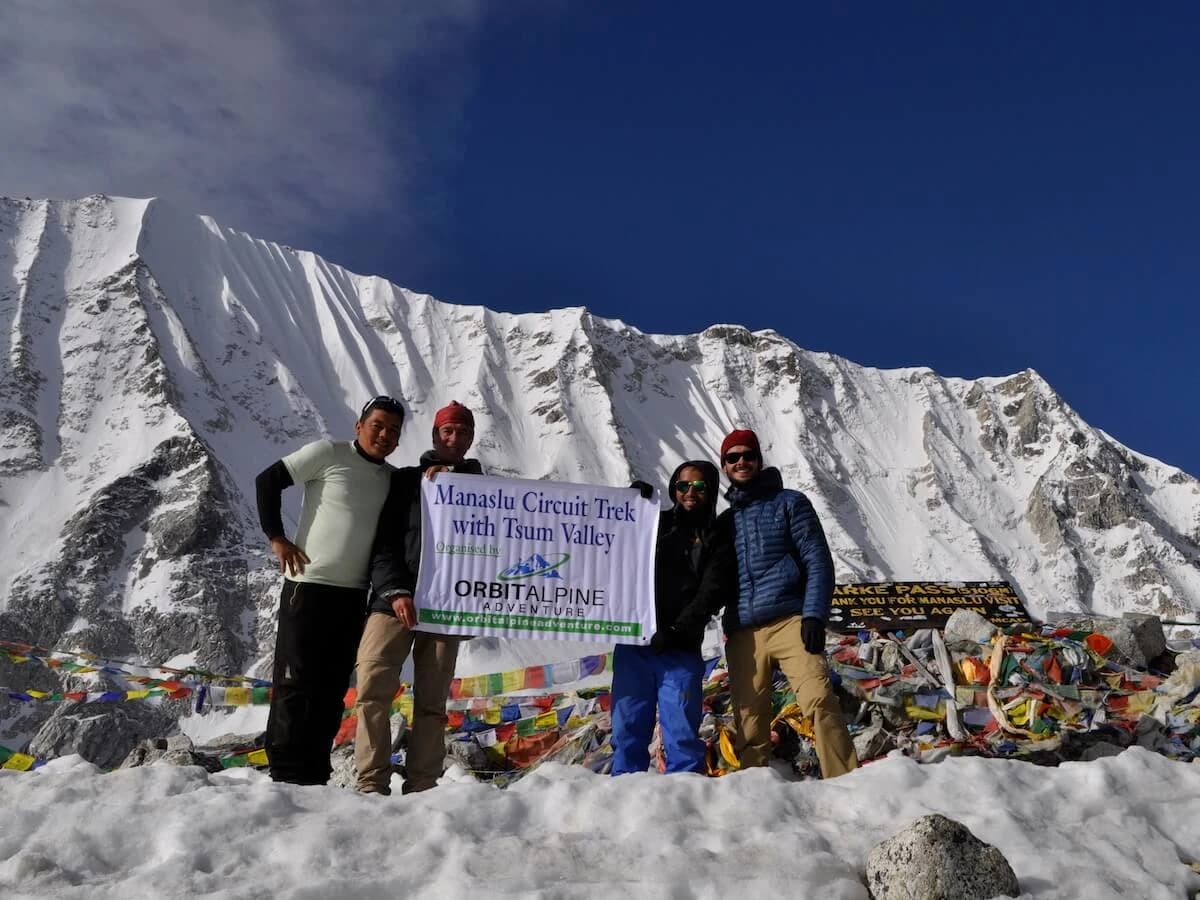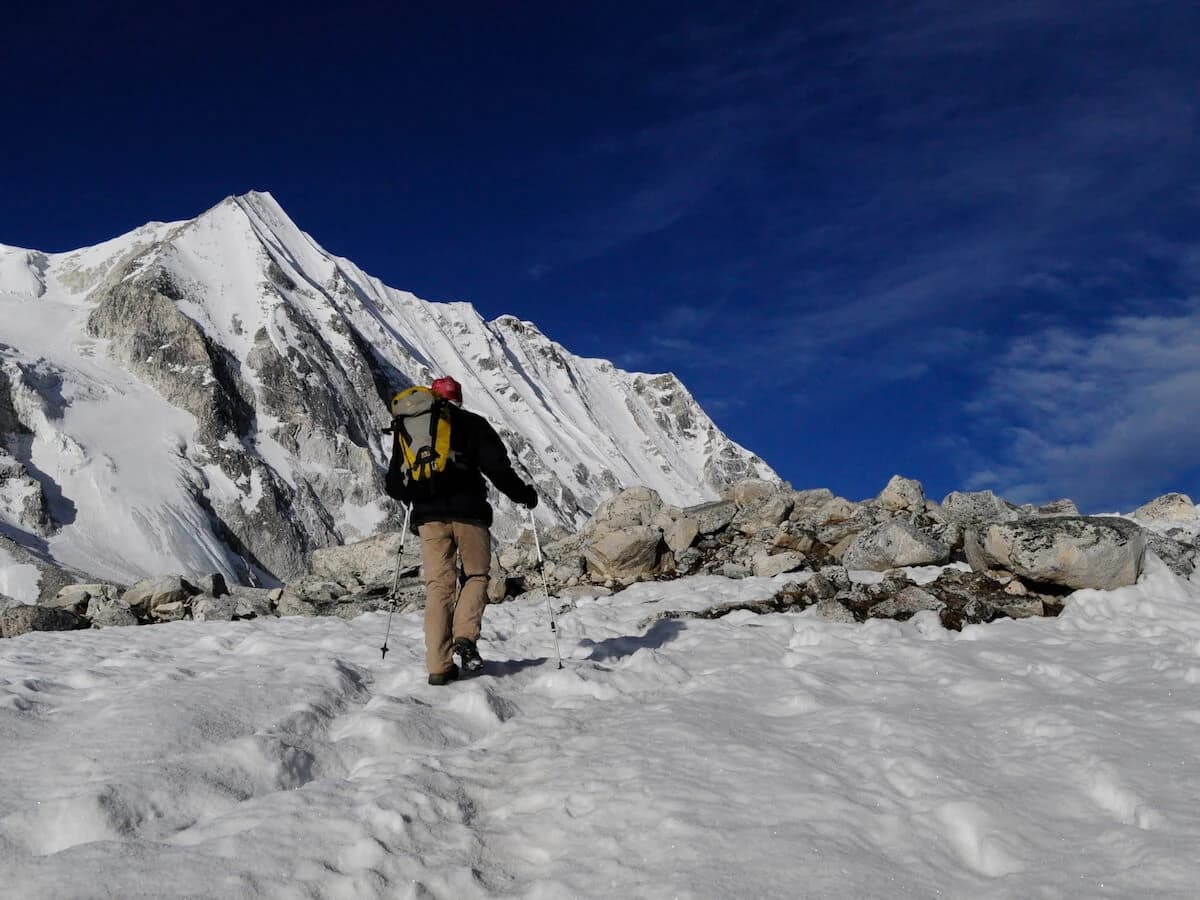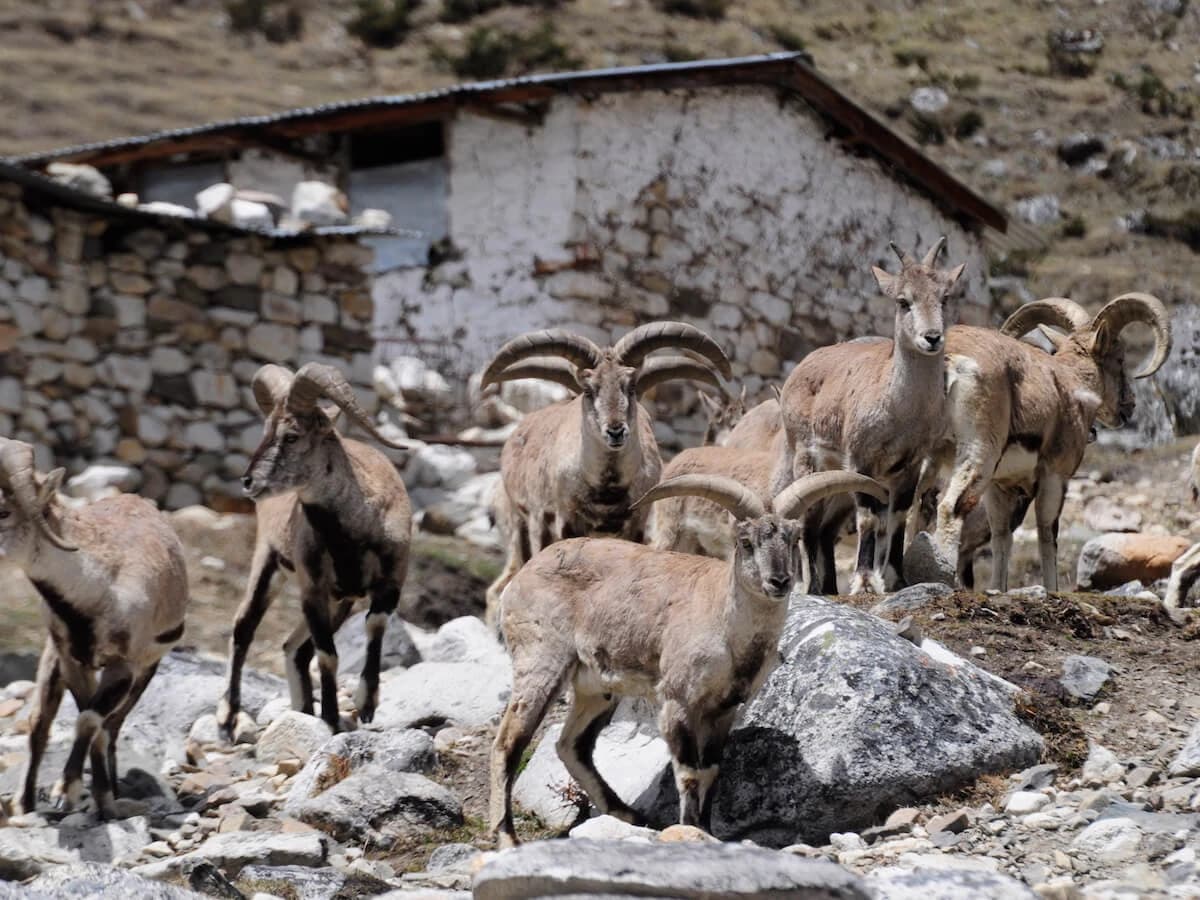Manaslu Circuit Trek is a magical journey through Nepal’s hidden Himalayan beauty, blending breathtaking nature, ancient trails, and rich cultural charm. Starting from the Gorkha region, it winds past rivers, forests, and peaceful villages, eventually reaching the stunning Larkya-La Pass. Along the way, trekkers witness vibrant Buddhist traditions, serene monasteries, and panoramic views of Mt. Manaslu. Ideal for adventurous hearts, this offbeat trail offers warm teahouse stays, friendly locals, and unforgettable moments.
Manaslu Circuit Trek
Highlights
- Less crowded area
- Complete teahouse trekking despite being remote and wild location
- Domestic flights not required, so, no chance for delay or postponement or cancellation
- Trekking trail moving further from the Budhi Gandaki River Valley and ending after reaching Annapurna Circuit trekking region
- Exploration of the diverse topography from sub-tropical to alpine region with flora and fauna of the relative climatic zones
- Feat of crossing Larkya La (5,106m) connecting with the Marsyangdi River Valley
- Panoramic view of the snowcapped peaks of Langtang, Manaslu and Annapurna regions
- Witnessing natural hot springs, spectacular glacier and Hindu plus Buddhist cultural villages
The Manaslu Circuit trek stands out as a preferred amid trekkers travelling the Nepalese Himalayan region, thanks to its rich experience that merges the joy of trekking with cultural involvement. This well-loved route in the Manaslu region trek has a long antiquity as an ancient trade path between Nepal and Tibet, offering explorers a journey through both natural beauty and cultural heritage. Initial in the historic Gorkha Kingdom, the trail follows the Budhi Gandaki River, moving through lush subtropical forests and ultimately rising into the drier high ground.

The Manaslu Round trek is one of Nepal's most precious treks, offering a treasured combination of natural and cultural experiences. This trek is famous for its magnificent views of Mt. Ganesh and the peaks of the Mansiri Himalayan Range, as well as its luxurious valleys and various topography. Along the path, trekkers come across plentiful natural hot springs, glacial lakes, and a wide variation of flora and fauna. The sounds of birds and animals nearby the path provide a motivational backdrop, pleasing to the eye the overall walking experience.
The Hindu and Buddhist cultural villages with complete cultural dress and jewellery are valued to see to get familiar with typical Nepalese culture. The centuries old Buddhist monasteries and adorned with mani walls, prayer flags and chorten also invite you to this region. The most attractive festival in Manalsu Circuit is Lhosar carried by the Buddhist community in January/February as well as other festivals in Nepal. You can enjoy a flawless Gurung and Sherpa culture, feasts and festivals including other cultural assets while walking around Manaslu region.

The Manaslu Circuit Trek ranges its uppermost point at Larkya-La Pass, standing at 5,213 meters, one of the boldest high passes in the Nepalese Himalayas. After this, the path mainly slopes, passing through peaceful mountainous forests and fields until it crosses with the Annapurna Circuit trek. Eventually, the Manaslu Round trekking route takes to Pokhara via a less-traveled, undisclosed path. This trek offers spectacular views of Mt. Manaslu, which at 8,156 meters is the world's eighth-highest summit.
The Manaslu Round trek is an off-the-beaten-path venture, demanding physical fitness and mental willpower, though you don't need to be a sportsperson for this moderately exciting trek. As part of the Great Himalayan Trail Nepal, the Manaslu region ranks among its top ten destinations, across 1,700 kilometers. The perfect times to trek the Manaslu Circuit are in spring and autumn, though it is open year-round. However, trekking in the Manaslu region trek during winter can be quite tough due to snow-covered advanced sections.
The Manaslu Circuit trekking package can be custom-made to your needs in association with Orbit Alpine Adventure. This article proposes to provide you with an outstanding Nepal trekking package at a realistic cost. While it includes a 20-day itinerary for the Manaslu Round trek, this plan can be altered based on your vacation time, budget, and likings. For a customized Manaslu Circuit trek itinerary, visit: www.orbitalpineadventure.com

You will be met by our staff at the Airport and will be then taken to the Hotel. They will explain briefly about the itinerary upon your arrival. Overnight stay at hotel.
Upon arrival at the Kathmandu, you will be preparing for the trek while enjoying sightseeing around Kathmandu Valley. Several world heritage sites including the Basantapur Durbar, Swayambhunath Temple, Bouddhanath Stupa and Pasupatinath Temple are the places you will visit on the second day. Overnight stay at a hotel.
Your trek to Manaslu Circuit begins from Kathmandu. To start, you can take a early morning direct bus from Gongabu Bus Park, Kathmandu, to Arughat. You can also take the bus to Dhading or Malekhu on the Prithvi Highway and then take the local bus or jeep thereafter.
Our guide will pick you up at your hotel and take you to the bus station by taxi. We recommend you have breakfast or ask your hotel to pack it. The bus will stop on the way for a toilet break and lunch.
Although the road is dusty and bumpy, you will catch the best landscape views from your window seat. You can stop at many rest stops for short breaks and meals. Overnight at one of the teahouses in Maccha Khola
Begin early from Machhi Khola by crossing the river, and move on to Khrolabesi, where there’s a hot spring aka “Tatopani”. The trail is mostly forested and there are rivers along the way. The rapids and the sounds are more than soothing; and later on you encounter a waterfall where we can take a brief stop. Moving ahead from Dovan, we ascend for less than two hours and walk two hours straight walk before camping for the night.
On the sixth day, we trek for a relatively short period of time. Around four hours of trek past the great looking valleys and the rivers takes us to a wonderful small village called Philim. Also during the way, we come across several suspension bridges that offer great view of the adjoining ambience. Overnight stay at a guesthouse.
The trail now is undulating with occasional rise and falls. Spectacular waterfalls greet you on the way, so do more suspension bridges. Before reaching Bihi Phedi, we pass the beautiful Eklebhatti village. Overnight stay at a guesthouse.
We pass several Gurung settlement areas and valleys on day eight as we move up the fascinating trail. Namrung has many Buddhist monasteries and Gompas that signify that the Tibetan culture is still quite popular in the region. Trail with carved stones can also be new to some foreign trekkers. We will visit the nearby village in Namrung and stay overnight at a guesthouse there.
On day nine we will be trekking almost 900 meters and by the end of the day’s trek, we will reach Samagaon loacted at 3530 meters of altitude. Samagaon is a wonderful little village which provides great view of Mount Manaslu. There is also a popular Gompa, monastery, in Samagaon. Overnight stay at a guesthouse.
The next day, we will be spending at Samagaon itself primarily for acclimatization of the increasing altitude and the conditions. However, there are several options on that day as well as we can stroll around the local villages and enjoy the scenery there. Also a half-day’s walk until Birendra Lake is also possible from Samagaon. Overnight stay at a guesthouse.
The trail to Samdo crosses several grazing and pasture areas and then gradually climbs up the valley. We can have fantastic view of the Himalayan mountains especially MountManasluand others once we reach Samdo. Samdo is also the last permanent settlement area in the valley and this remote village is just a day’s walk away from the neighboring Tibet border. Overnight stay at a guesthouse.
After leaving the village of Samdo, we cross a stream and reach now deserted Larkya Bazaar. Years ago, this village used to be a major trade point with Tibet. But, the village looks sorry these days as the traders have chosen some other places for trade along the Tibetan border. Overnight stay at a guesthouse.
On day fourteen, we trek to Larkya-La Pass which happens to be one of the most beautiful Himalayan Pass in Nepal. It is situated at a daunting altitude of 5213 meters and several mountain peaks are clearly visible from this Pass. Himlung Himal (7,126 meter), Mount Cheo (6,820 meters), Mount Annapurna II (7,937 meters) and MountManasluare all visible from the Pass. From Larkya-La Pass, we descend to Bhimtang where we will be staying in a guesthouse.
Few hours of gentle downhill climbing through several fields and settlement areas takes to a small village called Tilje. While on the way, we come across a massive rhododendron forest. Overnight stay at a guesthouse.
Now, we begin our return trip as we trek to Tal on the sixteenth day. A few hours of mild trekking is enough for the day. Overnight stay at a guesthouse.
On the 17th day we arrive at Syange, a small village town near Annapurna region, after around 4 hours of trek. Overnight stay at a guesthouse.
Trek further from Syange leads us to Bhul Bula. Overnight stay at a guesthouse.
We catch a local jeep to Beshisahar, the headquarters of Lamjung district, and then drive back to Kathmandu via the Prithvi Highway. Overnight stay at a hotel in Kathmandu.
Today you will return to your country. We will take you to the airport a few hours before your scheduled flight time.
- Complimentary airport pick-up and drop-off
- Complimentary welcome dinner
- Three nights' accommodation in Kathmandu, including breakfast.
- All necessary trekking permits for Manaslu Special, Manaslu Conservation Area, Annapurna Conservation Area, TIMS card, etc.
- All accommodation during the trek
- Three meals a day during the trek
- A cup of tea or coffee with the meal
- If and when available, fresh fruit will be provided
- Complimentary duffel bag, trekking map, and four-season sleeping bag, if needed.
- Professional English-speaking government-registered and first-aid-trained guide and one strong potter for two people
- First-aid kit
- Kathmandu to Machhakhola by bus
- Dharapani to either Pokhara or Kathmandu by bus
- Staff insurance, meals, accommodations, equipment, transportation, etc.
- Rescue arrangements, if necessary
- Agency service charge and government tax or VAT
- Certificate of achievement, if needed
- Travel and rescue insurance (which is a must for doing an adventurous journey) covering both medical and emergency evacuation charge
- On-Arrival Visa fees in Nepal
- Gratuity (tips) for guide, porters and driver
- Additional night accommodation and meals in Kathmandu due to early Nepal arrival, late departure and return without completing the trekking itinerary (your own reasons)
- Altitude chamber or oxygen
- Personal expenditure like phone calls, bar bills, battery recharging, extra porter, mineral and boiled water, shower, heater, laundry, etc.
- Additional side trips or sightseeing tour
- Air ticket fare to and from Nepal
For price quotation and further details please contact us.
You can book Manaslu Circuit trek by visiting the official website of Orbit Alpine Adventure: www.orbitalpineadventure.com. You can also reach us via email or direct phone calls, as per your convenience.
The beauties of the Manaslu Round Trek comprise natural diversity and cultural variety. The landscapes of this region vary from 700m (Arughat) to 5,160m (Larkya Pass), sheltering varieties of flora and fauna. The stunning views of the snowcapped peaks of Langtang, Manaslu and Annapurna ranges and alluring landscapes are assets. Hindu and Tibetan Buddhist ethnic communities live here by following their respective culture and tradition. The natural hot springs, glaciers and scattered human settlement areas are other attractions of this place. Diverse flora and fauna species conserved in Manaslu Conservation Area and Annapurna Conservation Area help make your trekking more significant. You can take some side trips to the natural and cultural sites like Birendra Lake and Pungeen Gompa for acclimatization.
If you want to do solo trekking to Manaslu Circuit, of course, it is possible. However, you need to be in two members supported by a registered guide, as some sections of Manaslu region trekking are restricted. You can contact Orbit Alpine Adventure, which makes all the arrangements for Manaslu Circuit solo trekking, including the required permits.
- Manaslu Restricted Area Permit (RAP)
- Manaslu Conservation Area Permit (MCAP)
- Annapurna Conservation Area Permit (ACAP)
Important items include durable walking boots, warm clothing, a top-class sleeping bag, trekking poles, a first aid kit, water cleansing tablets, and private items such as toiletries and snacks.
Accommodation is mostly in teahouses and lodges which offer elementary lodging and meals. Rooms are usually shared, and facilities can be quite simple.


